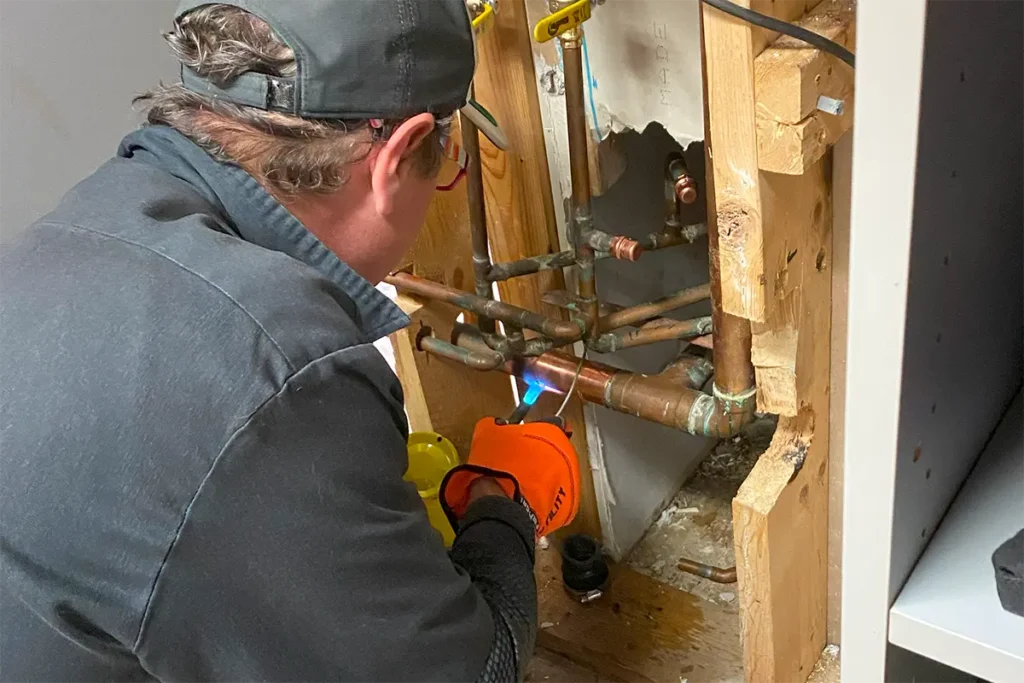Yibai Insights
Explore the latest trends, news, and insights from around the world.
When Pipes Attack: Tales of Plumbing Mayhem and How to Fix Them
Discover shocking plumbing disasters and expert fixes in When Pipes Attack! Uncover tips to rescue your home from plumbing mayhem now!
Top 5 Plumbing Disasters: How to Tackle Each One
When it comes to home maintenance, few issues can be as daunting as plumbing disasters. From sudden leaks to complete pipe bursts, understanding how to effectively manage these situations is crucial for any homeowner. In this article, we will explore the Top 5 Plumbing Disasters and provide you with actionable tips on how to tackle each one, ensuring your home remains safe and functional. For comprehensive plumbing tips, you might want to check out Home Depot's Plumbing Tips.
1. Leaky Pipes: A common plumbing issue that can lead to significant water damage if left unchecked. Start by locating the leak and turning off your home’s water supply. Use a pipe sealing tape for a temporary fix until a professional can assess the damage. 2. Clogged Drains: Often caused by hair, grease, or foreign objects, clogged drains can disrupt daily activities. Utilize a plunger or a drain snake to relieve the blockage. 3. Running Toilets: This annoying problem can waste gallons of water. Check the flapper valve and adjust the float valve as needed. 4. Water Heater Failure: An unexpected lack of hot water can signal a heater failure. Check the thermostat and reset it if necessary. 5. Pipe Bursts: A serious plumbing disaster often caused by extreme temperatures. Shut off the water supply immediately and contact a licensed plumber. For further guidance, refer to Angi's Common Plumbing Problems Guide.

What to Do When Your Pipes Burst: A Step-by-Step Guide
Experiencing a burst pipe can be a homeowner's nightmare. The first step is to turn off your main water supply immediately to prevent further flooding. Locate your shut-off valve—typically found near the water meter—and twist it clockwise until it stops. Next, drain any remaining water from the pipes by opening all faucets and flushing toilets. If the burst has caused significant flooding, it’s essential to contact emergency services for assistance.
Once the immediate danger is addressed, assess the damage by checking surrounding areas for water accumulation. Use a wet/dry vacuum to remove excess water and dry off any soaked surfaces. Once the area is safe, consider calling a licensed plumber to repair the burst pipe. It’s also wise to consult your home insurance provider regarding potential claims due to the damage. For further information on preventing water damage in the future, visit FEMA's resources.
The Most Common Plumbing Myths Debunked
There are many plumbing myths that circulate among homeowners, leading to costly mistakes and misunderstandings about their plumbing systems. One of the most common myths is that flushing any item down the toilet is acceptable as long as it’s small enough. Contrary to this belief, items such as wipes, cotton balls, and even certain types of toilet paper can cause significant blockages. According to the American Standard, the only things that should be flushed are human waste and toilet paper. Understanding what can and cannot be flushed is crucial to preventing plumbing emergencies.
Another prevalent myth is that DIY plumbing repairs can save homeowners considerable amounts of money. While it’s true that some small repairs can be tackled independently, many homeowners end up causing more harm than good. Attempting to fix complex plumbing issues without the right knowledge can lead to costly repairs down the line. A professional plumber has the experience and tools to effectively resolve problems. For further insight, visit the HomeAdvisor Guide, which explores when it's time to call in the experts rather than risking a DIY disaster.